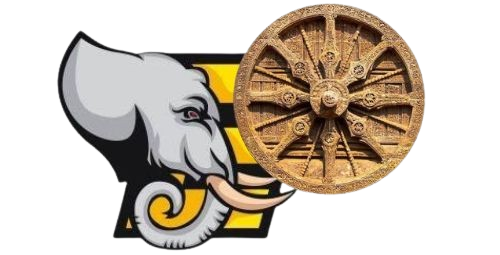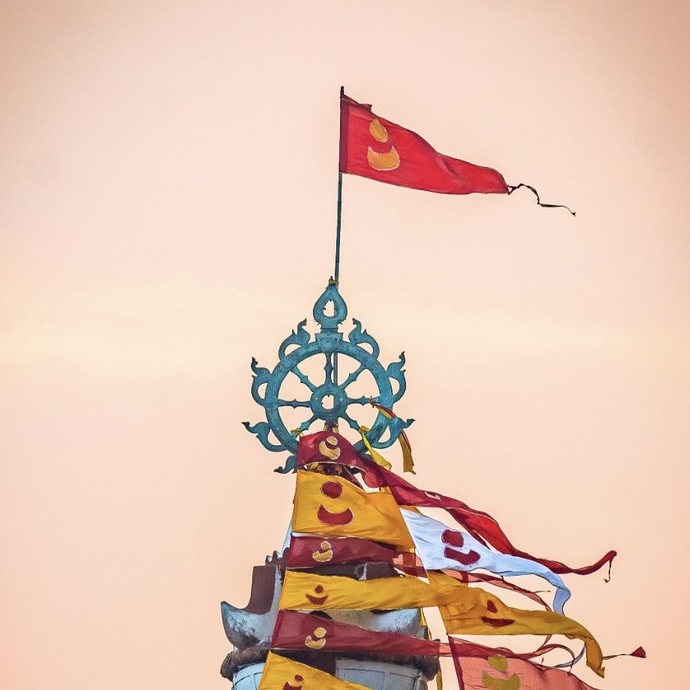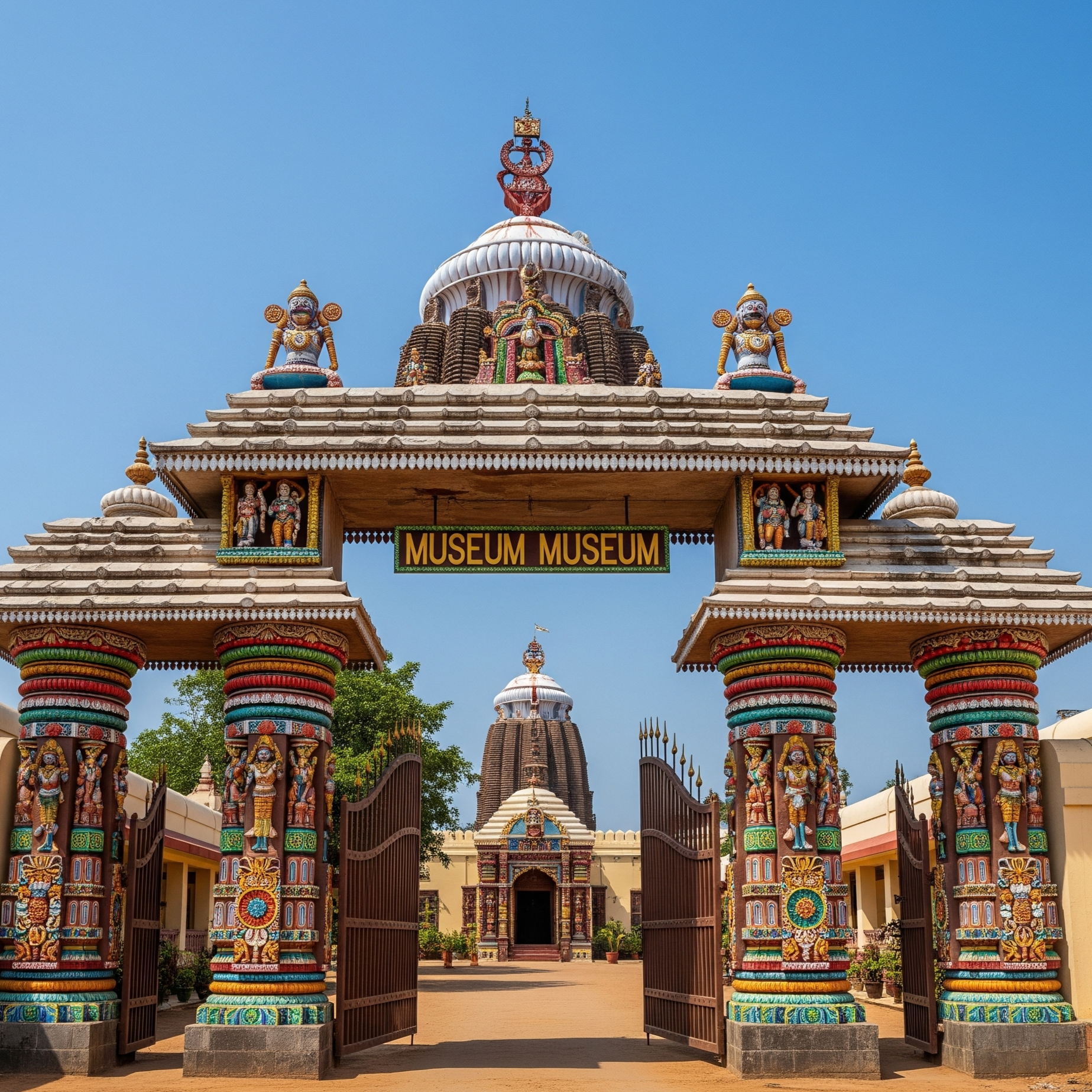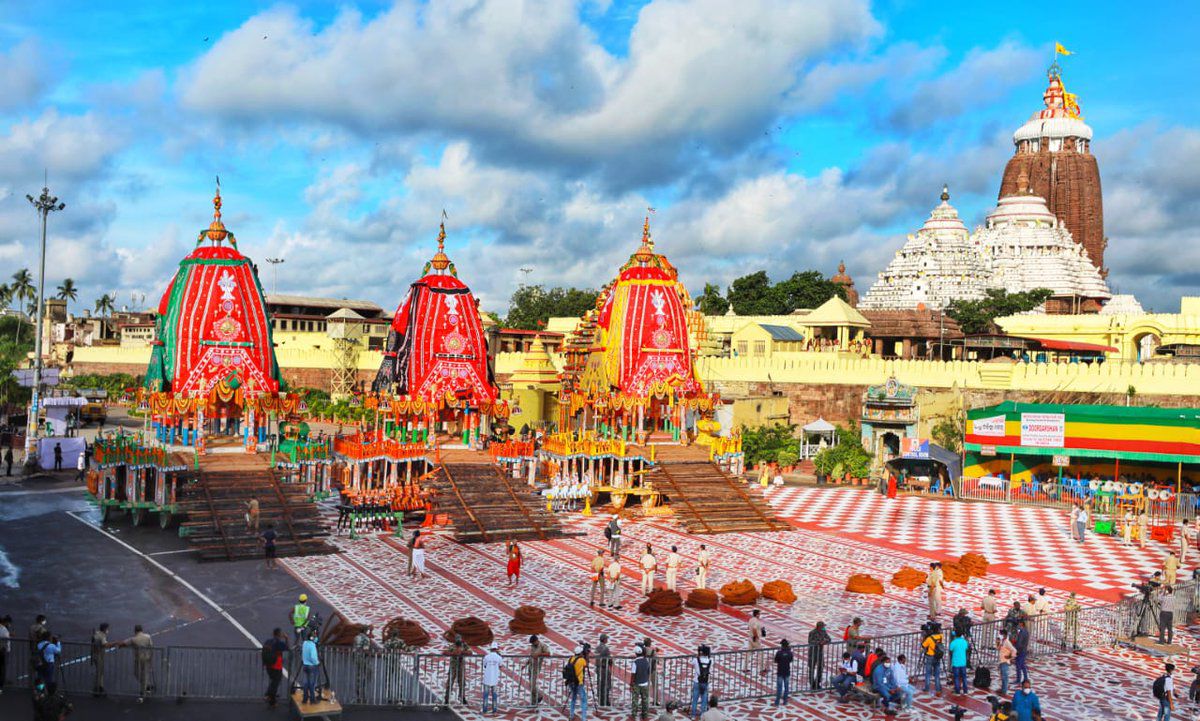The sacred town of Puri in Odisha is not merely a spiritual destination but a living embodiment of ancient faith, divine compassion, and profound symbolism. Among its many marvels, the towering flag atop the Shree Jagannath Temple—known as the ‘Patita Pavana Bana’—holds a unique place in the religious consciousness of millions. Visible from far and wide, this sacred flag fluttering above the 65-meter-high Shikhara (main dome) of the temple is more than a mere cloth—it is a spiritual symbol of salvation, inclusivity, and divine grace.
While the temple structure, rituals, and the idols of Lord Jagannath, Balabhadra, and Subhadra command global reverence, the Patita Pavana Bana (Flag of the Redeemer of the Fallen) atop the temple carries its own story, rooted in history, philosophy, and mysticism.
This article explores every aspect of why the temple flag is called Patita Pavana Bana, its origin, spiritual meaning, rituals, and its enduring cultural significance.
Meaning of ‘Patita Pavana’
The term ‘Patita Pavana’ comes from Sanskrit:
- ‘Patita’ means “fallen,” or those who are downtrodden, marginalized, or impure by social or ritual standards.
- ‘Pavana’ means “purifier” or “redeemer.”
Hence, Patita Pavana translates to “The One who Redeems the Fallen”—a title that uniquely belongs to Lord Jagannath, a deity who accepts all devotees, regardless of caste, creed, gender, or social standing. He is not just a god of the elite or the priests; He is the God of all, especially of those considered ‘untouchable’ or marginalized.
The flag atop the Jagannath Temple, fluttering in the eastern wind, is named after this very quality of Lord Jagannath—as the universal redeemer.
Historical Origins of the Patita Pavana Bana
The practice of hoisting a flag atop temples has been an age-old Hindu tradition, symbolizing victory of divine forces and the presence of the deity. However, in the case of the Jagannath Temple, the flag is not just symbolic—it is deeply personal and spiritual.
According to legends and historical traditions, the title ‘Patita Pavana’ was formally attributed to Lord Jagannath during the medieval era, a time when the social structure was deeply divided by caste and ritual purity.
A popular historical anecdote refers to a devout outcaste named Hari Das, who was forbidden from entering the temple. Yet, his devotion was so intense that Lord Jagannath appeared before him outside the temple gates, offering him His darshan and blessings. To honor this divine gesture, the image of Lord Jagannath as ‘Patita Pavana’ was enshrined on the southern gate of the temple (also known as the Patita Pavana Dwar), and from then onward, the flag atop the temple became a spiritual beacon for all those who couldn’t enter.
Thus, the Patita Pavana Bana became a symbol of divine inclusion, a sign that Jagannath belongs to everyone, even those society may reject.
Physical and Ritual Details of the Patita Pavana Bana
1. Fabric and Color
The flag is typically made of red or deep saffron fabric, often bearing symbols such as:
- Chakra (Discus)
- Conch shell
- Occasionally, motifs like Hanuman or Garuda in devotional expression
The red color signifies shakti (divine energy) and sacrifice, while the flag as a whole acts as a moving expression of Lord Jagannath’s protective presence.
2. Size and Design
The flag is generally 14 to 20 feet long, tapering into a flowing banner. It is tied to a 31-feet-long wooden mast, fixed at the very top of the main dome (Bada Deula).
What makes this practice remarkable is that the flag is changed every day, despite the challenging height and wind pressure.
3. The Ritual of Changing the Flag
The Sevayats (temple priests) responsible for this ritual are called ‘Chara Sevakas’. Every evening before sunset, one sevayat climbs the narrow dome without any modern safety equipment—barefoot and with unwavering faith—to replace the flag.
This dangerous yet devotional climb is believed to be protected by Lord Jagannath Himself. It is said that if the ritual is not performed, the temple is not considered spiritually complete for that day.
This act of surrender and service reflects the human capacity to overcome fear through faith and has been performed continuously for centuries.
Spiritual Significance of the Flag
The Patita Pavana Bana serves several spiritual purposes:
1. Darshan for the Distant Devotee
The towering flag is visible from several kilometers away. For those unable to enter the temple, a glimpse of the flag is equal to having Lord Jagannath’s darshan. For centuries, women in purdah, lepers, lower castes, foreigners, and non-Hindus have taken solace in viewing the fluttering banner.
2. Symbol of Lord Jagannath’s Cosmic Presence
Unlike other deities confined to temple sanctums, Lord Jagannath is a public deity—He rides chariots, appears in festivals, and even allows His body to decay and be reborn. The flag above His temple reaffirms His ever-present watch over the world, day and night.
3. Defying the Natural
One of the most mysterious features of the Patita Pavana Bana is that it always flutters in the opposite direction of the wind, a phenomenon often observed by devotees and yet scientifically unexplained. It is taken as a miracle of divine energy, a subtle but strong message that divinity transcends the laws of nature.
Cultural and Social Impact
Over the centuries, the symbol of the Patita Pavana Bana has been appropriated into poetry, music, and folklore, particularly in Odia culture. In bhajans (devotional songs), Lord Jagannath is lovingly referred to as the “savior of the fallen,” and the banner becomes a metaphor for hope, acceptance, and deliverance.
In modern times, the term Patita Pavana has been invoked by social reformers, Dalit leaders, and poets as a spiritual endorsement of equality, proving that Lord Jagannath has always stood above the boundaries imposed by human society.
Conclusion
The Patita Pavana Bana, fluttering atop the towering spire of the Jagannath Temple, is far more than a traditional flag. It is a spiritual lighthouse, a beacon of hope, equality, and divine embrace. Rooted in the ideals of inclusivity and cosmic love, the flag reaffirms that Lord Jagannath is not the god of the privileged, but the protector of the downtrodden—the Patita Pavana.
Its daily renewal through ancient ritual, its visibility from afar, and its symbolic meaning make the flag a living expression of divine compassion. Whether for pilgrims entering the temple or for those who must stay outside, the sight of the Patita Pavana Bana offers the same message: “You are not alone—He watches over all.”
As long as the flag waves in the sky above Puri, the spirit of Jagannath Dharma—compassionate, inclusive, and eternal—lives on.




